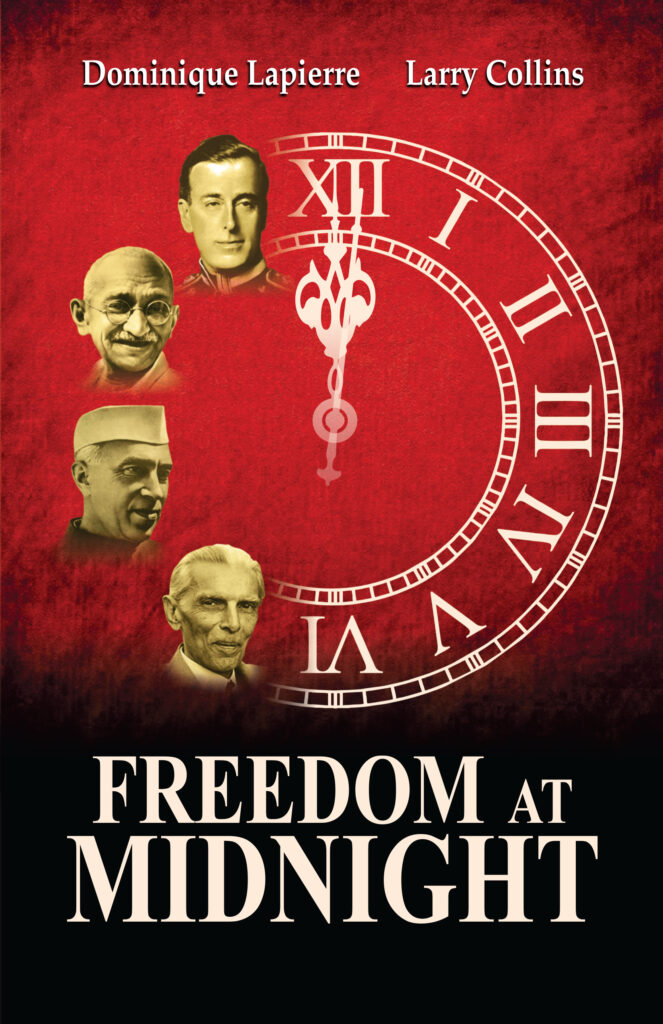In a world rife with complex narratives about independence, conflict, and the intricate tapestry of human experience, how often do we stop to ponder the true essence of freedom? “Freedom at Midnight” offers an extraordinary portal into the transformative era of India’s independence, illuminating the historical poignancy with an unmistakable fervor. The book, co-authored by the illustrious Dominique Lapierre and Larry Collins, emerges as a vibrant tapestry woven with the threads of historical fact, human emotion, and unyielding spirit.
What if engaging with history could be as captivating as a well-spun tale of adventure? “Freedom at Midnight” presents this very challenge: how can we, as modern readers, immerse ourselves in the past without losing the grip on our own contemporary realities? This engaging narrative unravels the journey leading up to India’s independence in 1947, portraying the push and pull of various forces that shaped a nation at its breaking point.
At the heart of this compelling narrative, we find an ingenious structure that allows the reader to traverse multiple perspectives. The authors expertly weave the voices of key historical figures, bringing to life the struggles of leaders like Mahatma Gandhi and Jawaharlal Nehru, while also shedding light on those often forgotten — the ordinary citizens who bore the brunt of upheaval. The lively prose draws readers into the bustling markets, rebellious gatherings, and clandestine meetings, instilling a sense of immediacy and urgency that is seldom found in historical narratives.
One of the book’s significant strengths lies in its richly painted imagery. Vivid depictions of the chaotic streets during the Partition, where families were torn apart and friendships shattered, linger long after reading. The authors skillfully juxtapose the tragic tales of displacement with the exhilarating spirit of hope that characterized the independence movement. This duality evokes deep contemplation: can we truly appreciate freedom without acknowledging the sacrifices associated with it?
Moreover, the emotional weight of the narrative is accentuated by compelling anecdotes and quotes that resonate with readers on an emotional level. Take, for instance, the depiction of the harrowing conditions that ensued during Partition, where millions were uprooted from their homes, leading to an unprecedented humanitarian crisis. Such narratives demand reflection: in our pursuit for freedom, how many innocent lives are we willing to overlook? This invites a broader dialogue about the nature of freedom and the ethical implications that accompany it.
Delving deeper into the book, we observe the nuanced portrayal of pivotal events leading to the midnight of August 15, 1947. The meticulous detailing of negotiations and congress meetings offers an analytical lens through which the evolution of political thought can be examined. It begs the question: how does one define freedom in a nation riddled with diverse ideologies and languages? The book provides insight into the cacophony of voices that clamored for representation, leading us to reflect on the myriad ways freedom can be understood and manifested. This multiplicity enriches our comprehension of history and encourages us to seek parallels in our society today.
Yet, beneath the historical gloss lies an allure that transcends temporal boundaries. The authors’ portrayal of personal relationships amidst the crisis adds a layer of complexity often overlooked in rigid historical recounting. Instances of betrayal, camaraderie, and resilience surface throughout the storyline. In exploring these relationships, the narrative challenges conventional perceptions of loyalty and patriotism. How do we reconcile the individual’s desire for freedom with the collective struggle for independence? Through these relations, “Freedom at Midnight” invites readers to evaluate their own beliefs about loyalty and national identity.
What is freedom if one must sacrifice personal bonds to achieve it? This provocative question reverberates through the text, leading us to ponder the sacrifices of both public figures and ordinary citizens. The emotional gravity of these inquiries compels readers to reassess their understandings of sacrifice and solidarity within their own communities. As we consider the triangulation of history, relationships, and freedom, we are left with an indelible mark that resonates deeply.
Furthermore, the artistry with which Lapierre and Collins blend fact with narrative creates a canvas rich with cultural nuances, showcasing the vibrancy of Indian society during this tumultuous period. The exploration of various social classes, religions, and regions casts light on the melting pot that is India, emphasizing the possibility of unity in diversity — a concept that remains salient today. In this respect, the book serves as both a historical recount and a poignant commentary on the ongoing quest for identity and belonging within a pluralistic society.
Ultimately, “Freedom at Midnight” stands as an evocative exploration of what it means to seek liberation. It captures the indomitable spirit of individuals who dared to defy the status quo, challenging the reader to consider their role in contemporary struggles for justice and equality. As we drift through the pages, we are not merely passive recipients of history; instead, we are active participants in an ongoing narrative that demands our attention and engagement.
In conclusion, “Freedom at Midnight” is more than a mere recount of events; it is an invitation to engage with the past in a manner that reflects on our present and shapes our future. Will we allow the lessons of history to guide our pursuits of freedom, or will we remain shackled by indifference? The choice is ours to make, and the challenge, ever so poignant, beckons us to ponder deeply on this universal quest for liberation.
